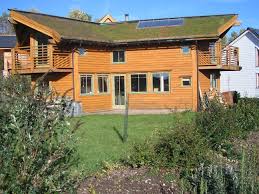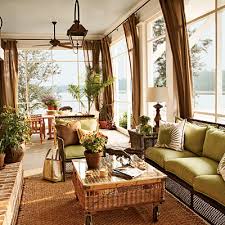Posted: April 28th, 2014 | Author: jimmurray | Filed under: Home Decoration, Sustainable Architecture | Tags: Eco Friendly, Home decor, low carbon footprint | No Comments »
This post is another in our guest blogger series. This one is from Leon White. Hope you find it as interesting and informative as I did.
 It is a common desire to create a living space which is comfortable and chic. However home furnishings can leave large carbon footprint which is very harmful for the environment. Read on to find out how you can opt for innovative home décor ideas without compromising style. You can choose to decorate your home in an eco-friendly way. You must select non-toxic paints and right fabric. These days while decorating homes families are opting for environment-friendly choices. Going green is more than a fad now. You can decorate your home using less energy, fewer non-renewable resources and lesser water.
It is a common desire to create a living space which is comfortable and chic. However home furnishings can leave large carbon footprint which is very harmful for the environment. Read on to find out how you can opt for innovative home décor ideas without compromising style. You can choose to decorate your home in an eco-friendly way. You must select non-toxic paints and right fabric. These days while decorating homes families are opting for environment-friendly choices. Going green is more than a fad now. You can decorate your home using less energy, fewer non-renewable resources and lesser water.
Need for environment-friendly choices
With threats of global warming individuals are becoming more aware about climate change and environment. Most home owners want to behave as responsible citizens by making use of eco-friendly home décor items. These décor items can be recycled and renewed to give a new and interesting look to your home. Redecorate your home on a green theme. As you decide the décor be kind to the environment. The best way to go green is to incorporate reused items in home décor. It is essential that you opt for eco-friendly home décor ideas as it can save energy and cause less harm to the environment.
 Popular eco-friendly flooring
Popular eco-friendly flooring
You can live in an environmental friendly atmosphere by selecting the right flooring, furnishing and lighting. You can replace artificial flooring with natural products like bamboo or linoleum. Bamboo is durable and adds a touch of elegance to the flooring. It comes in different colors and patterns. Bamboo is easy to maintain and can be installed easily. Cork, the bark of an oak tree, is another biodegradable product which can be used for flooring. Cork can be used in variety of paints to suit the color scheme of your room. Glass is a popular eco-friendly material which does not mildew or mold in damp environments.
Opt for “green” paints
Eco-friendly paint can improve the quality of air inside your home. When you decide to change the color palette of your home you can opt for zero VOC paint or low VOC paint. VOC or volatile organic compounds are found in different products. VOC’s from paints have a negative quality on the environment. It is important to remember that lighter the paint lesser is the VOC that it will contain. You can opt among milk paints, clay paints or lime wash. Milk paints are biodegradable and organic.
 Right furniture for a new look
Right furniture for a new look
When you buy eco-friendly furniture ascertain the materials which are used to create the furniture. Make sure that recyclable and sustainable sources are used to create the pieces of furniture. Adhesive used in the furniture should not contain VOC. You can select furniture which is used by bamboo. You cans hop in vintage or antique shops. Before you buy new items you can reuse the existing furniture. Use innovation and creativity to decorate your home and add a fresh look. Bamboo is considered as one of the most eco-friendly choices. Opt for furniture which is made of recycled material.
Adopt a green lifestyle
Whilst shopping for home décor accessories be on the lookout for products which are made from organic fiber. Proper lighting can create a magical effect in your home. You can make use of energy saving bulbs to add a brighter look to your home. You can consider buying furnishings which have been manufactured with renewable materials. If you are a responsible person who is trying to lead a green lifestyle these ideas on home décor will be useful.
Author Bio: Leon White has decorated his home with eco-friendly wallpapers. He wants to adopt a green lifestyle. To keep the well-furnished home secure Leon has opted for ADT-Pulse. It is a trustworthy service which offers strong protection to homeowners.
Posted: April 14th, 2014 | Author: jimmurray | Filed under: Green Businesses, Green Initiatives | Tags: Eco Friendly, green, Green Movement, Markham, Toshiba Canada | No Comments »
Here’s a little news story about a big company doing green things. Toshiba Canada is one of the more progressive outposts in the vast Toshiba empire when it comes to green initiatives. We encourage you to check out this link…who knows, maybe you’ll get some ideas that will help you green your workplace too.
http://www.yorkregion.com/news-story/4459820-markham-company-puts-focus-on-being-green/
Posted: September 22nd, 2013 | Author: jimmurray | Filed under: green art, Re-use | Tags: Eco Friendly, Green Movement, recycling, sustainable innovation, Waste re-use | No Comments »
This is a really cool article about a ‘green’ activity that’s going on in Berlin Germany. The link below will take you to the Fast Company blog where this article is posted. I think this would be a great initiative to try and get launched in Canada, where there seems to be a never ending supply of stuff destined for landfills just hanging around on the streets. The artists’ ‘re-use of this material not only makes for some very interesting art, but also reduces the burden that our ever growing landfills must carry.
The blog was written by NYC writer Sydney Brownstone, whose bio is below the link.
http://www.fastcoexist.com/3016733/berlin-street-artists-make-insane-art-out-of-the-citys-waste#6
Sydney Brownstone is a New York-based staff writer at Co.Exist. She lives in a Brooklyn apartment with windows that don’t quite open, and is interested in systemic abuse of public space and the commons. She’s written for the Village Voice, Mother Jones, Brooklyn Magazine, The L Magazine, and has contributed to NPR.
Posted: July 2nd, 2013 | Author: jimmurray | Filed under: Green Communities, Green Initiatives, Green Kids | Tags: Eco Friendly, low carbon footprint, Renewable Energies, solar cell technology, Sustainability, Wind turbines | No Comments »
This is a guest post by Liz Nelson from WhiteFence.com. She is a freelance writer and blogger from Houston. Questions and comments can be sent to: liznelson17 @ gmail.com.
While building your own solar array to provide enough power to your home to be 100-percent sustainable could cost tens of thousands of dollars, you don’t need a lot of money to teach children how it works and why it’s important. In fact, there are a lot of kits on the market that can serve semi-practical uses while demonstrating to the kids the mechanics of it all. Most of these kits cost less than $150 and can provide a wealth of knowledge for green sustainability.
1. Solar Arrays – The solar panel kit offered by HarborFreight.com produces 45 watts of power while providing the capabilities to power small 12-volt devices. It also supports the use of 5 volt USB devices such as phone charges and other USB electronics normally purchased for computers. This kit can be expanded on by combing more panels together while using a deep cycle battery and an inverter – both are sold separately. This is a fun and quick project for your children to assemble and can be utilized in many ways for practicality such as camping or tied into your home power needs. The kit itself is less than $250.
2. Wind Turbines – For less than $130, you could demonstrate to your children the power of wind turbines from KidWind.com. These wind turbines can be purchased as small single units to elaborate classroom kits, each turbine producing as much as two watts of power. These kits are tailored specifically for children and include easy to follow instructions in order to assemble them. Although they may not have the maximum production value of power as the solar kit listed above, they can easily be used to demonstrate how humans can harness natural sources of energy without consuming fuels to do so.
3. Small Solar Panels – For those who don’t want to spend a great deal of money teaching their children about solar power, LegacyStation.com offers an inexpensive kit to power several different projects. This 6-in-1 kit is under $20 and can demonstrate how to use solar power in order to create vehicles or propulsion systems in aircraft. These are easy to assemble and will provide a great deal of entertainment without the use of a single battery. Of course, there is nothing wrong with modification of any project should you want to demonstrate how solar arrays can power an object while charging a battery in order for the object to continue functionality when solar power is low. This would only require the use of a battery pack and rechargeable batteries that can be picked up from Radio Shack for less than $20.
4. Pressurized Power – While solar and wind are two of the most popular and practical methods for renewable energy sources, NationalGeographic.com has made an air and water power kit to teach children about how pressure can be used to power a variety of machines including vehicles. The kit allows children to build 15 different vehicles all powered by hydro-pneumo technologies. Pressurized air and water can be used as a form of propulsion, and the kit costs less than $50.
Getting your children excited about renewable energies now increases the knowledge they will have later. As technology develops to make these sources more efficient, preparing our future through educating our young will only increase the likelihood of total global sustainability in the decades to come. Your child may very well be the innovator that history remembers for delivering the perfected system – all from the kits they put together at 10 years old.
EDITOR’S NOTE: We are always receptive to having people create guest blogs for us, as the influx of opinions always makes for interesting reading.
Posted: March 31st, 2013 | Author: jimmurray | Filed under: Green Communities, Green Services, Our Green Standards | Tags: Directory, Eco Friendly, enterprises, green, Green Movement, showcase Our Green Directory | No Comments »
Depending on how many signups we have on our site, I usually sit down on Sunday morning and go through all the listing applicants, separate out the ones that do qualify for listing from those who don’t, assign categories and then post their listings on the site.
 As we have grown (about 550 listings), I have started to notice that there are a lot of businesses registering on the site that really do comply with the standards we have set for ourselves. While our standards are not as stringent as most directories of this kind, they are still designed to give our visitors eco friendly options for the products and services they are looking for.
As we have grown (about 550 listings), I have started to notice that there are a lot of businesses registering on the site that really do comply with the standards we have set for ourselves. While our standards are not as stringent as most directories of this kind, they are still designed to give our visitors eco friendly options for the products and services they are looking for.
To that end I thought it would be good to restate the standards we have defined for Our Green Directory. This should make it pretty easy for you to understand whether or not you would be qualified for listing on our site. If you’re not, it could save you the hassle of filling out the listing information. If you are qualified, then by all means feel free to list your business.
For those listing their business, please keep in mind that the description of your business in a line listing is limited to 255 characters including spaces. If you enter a description longer than that, the site will cut it off and that will be frustrating to the people reading your listing.
Our Green Directory Standards
Because Our GreenDirectory is a showcase of Green products and services, we should define as what we mean by “Green”.
For purposes of being promoted on this site, a “Green” enterprise or service is one which has the goal of either supporting environmentalism or supporting the preservation of the environment and adheres to any of the following criteria:
Overall, “Green” enterprises are those with a clear commitment to improving the environment in any of a number of ways.
In the Product Area this includes recycled products, fair trade products, organic products or products which are providing either a dramatic reduction in gas emissions or the promotion of alternative low carbon energy sources.
In the Services Area, this includes companies with a defined commitment to energy use reduction, by implementing strict conservation measures, by increasing recycling and reuse and by reducing consumption and waste. This also includes those companies and consultants who teach other companies how to become “Green”.
If your company is described by any of the aforementioned criteria, you may feel free to apply for placement on this site.
NOTE: We evaluate applying companies on an individual basis and reserve the right to deny any listings.
Posted: January 6th, 2013 | Author: jimmurray | Filed under: Green Initiatives | Tags: Eco Friendly, Heinz Canada, Ketchup, Plant Bottle, Plant-based Material., Recyclable, Sustainability | No Comments »
Because of its icon value, the ubiquitous Heinz Ketchup bottle is hardly thought of any sort of ecological marvel. In fact, you might tend to think of the millions of plastic ketchup bottle scattered around the known universe in pantries, grocery stores, restaurant and condiment tables as pretty much part of the problem.
You Can Judge This Book By Its Cover
I was jonesing for some ribs on New Years eve so off we went to the only place I was sure we could get a table, good old Swiss Chalet. While we were waiting for our festive feast the Heinz ketchup bottle on the table caught my eye. With the intriguing headline: “Guess What My Bottle Is Made Of and a superfluous ‘?’ (because it wasn’t actually a question), I read on nonetheless and discovered that this bottle and zillions others like it, is made from up to 30% renewable resources. Now this may not strike you as a big deal until you do the math and realize that the Heinz company is making a very substantial sustainability statement here.

Plant Bottle? I Don’t Know…Maybe.
You might take a bit of exception to them calling this bottle a ‘Plant Bottle’, but its clear that their collective hearts are in the right place going forward. So kudos, (with a small ‘k’) to the Heinz Company, for giving it a good shot. Let’s hope they keep moving in this direction and that this initiative sets and example that other packaged goods producers will follow
More info on the Heinz ‘Plant Bottle’ is available here:
http://www.heinz.com/CSR2011/environment/packaging_materials.aspx
 It is a common desire to create a living space which is comfortable and chic. However home furnishings can leave large carbon footprint which is very harmful for the environment. Read on to find out how you can opt for innovative home décor ideas without compromising style. You can choose to decorate your home in an eco-friendly way. You must select non-toxic paints and right fabric. These days while decorating homes families are opting for environment-friendly choices. Going green is more than a fad now. You can decorate your home using less energy, fewer non-renewable resources and lesser water.
It is a common desire to create a living space which is comfortable and chic. However home furnishings can leave large carbon footprint which is very harmful for the environment. Read on to find out how you can opt for innovative home décor ideas without compromising style. You can choose to decorate your home in an eco-friendly way. You must select non-toxic paints and right fabric. These days while decorating homes families are opting for environment-friendly choices. Going green is more than a fad now. You can decorate your home using less energy, fewer non-renewable resources and lesser water. Right furniture for a new look
Right furniture for a new look

